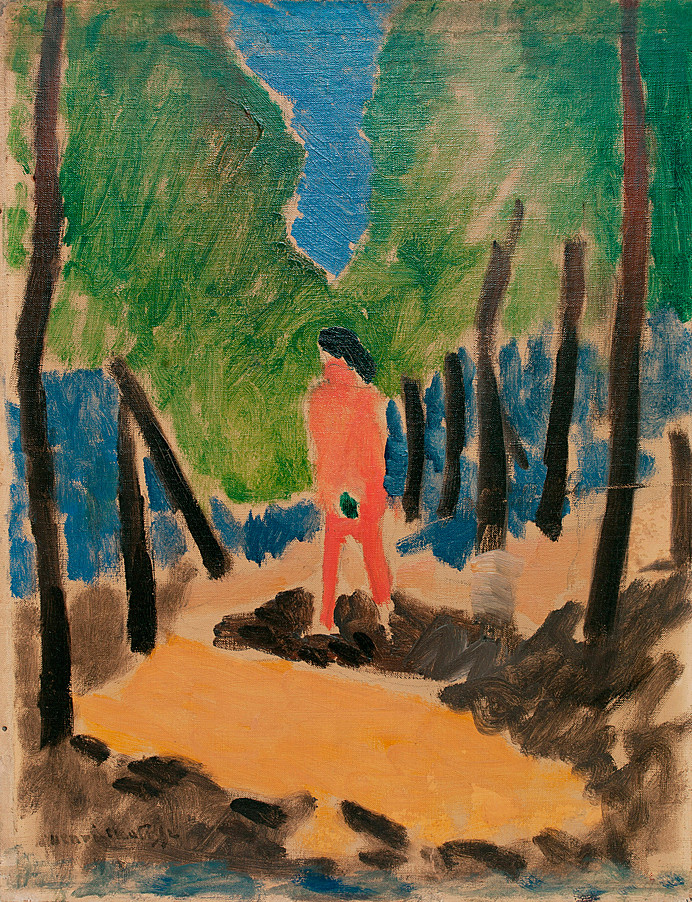art-Matisse.com
Henri Matisse 1869-1954
©Henri Matisse - Nude in Sunlit Landscape 1909
 Nude in Sunlit Landscape |
From the Solomon R. Guggenheim Museum, New York, USA:
In March 1909, the collector Sergei Shchukin commissioned Henri Matisse to paint decorative panels for his Moscow home. That summer, the artist stayed at Cavalière, a small town on the Côte d’Azur in France. There, he posed a model, whom he had brought from Paris, outdoors and painted several works from life. Nude in a Forest (Nu dans un paysage ensoleillé) is almost certainly one of these. The small pink figure, arms at her sides and head inclined to the left, stands centered on the canvas like the central figure in Paul Cézanne’s Three Bathers (Trois baigneuses, 1879–82), which Matisse owned. The nude is framed and echoed by tree trunks, her feet nearly encircled by tan and pale yellow, representing a sunlit patch of ground. A sliver of warm blue sky points directly at the top of the model’s head. Space in the painting is deliberately flat; despite the avenue of tree trunks in a perspectival formation and perhaps some coloristic indications, no real feeling of recession into depth is achieved. The figure and her surroundings remain on the surface. Thus pushed forward and emphasized by formal devices, the rosy body of the relatively tiny nude is not lost among the more assertive blues, greens, yellows, and earth tones of the setting.
Although more naturalistic in its hues and details, this casually painted sketch anticipates the simplified forms and patterning of flat color developed further in Dance (La danse) and Music (La musique), the monumental canvases for Shchukin’s house that were completed in 1910. While the formal innovations of Dance and Music—bold color, schematic articulation of the figures, and flat treatment of space—ensure their position as influential paradigms of early modern art, the overt subject of nude figures in nature connects these works to a painting tradition that extends back to the Renaissance. Matisse himself has essayed this form before, most notably in The Joy of Life (Bonheur de vivre, 1905–06). The studies painted at Cavalière relate even more directly to a third panel of the Shchukin commission that Matisse had originally planned; a watercolor sketch for this proposed third painting features women bathing and standing in a landscape. The zone of blue behind the model in the Guggenheim painting may indicate a body of water like that seen both in other works executed that summer in Cavalière.
Joseph R. Wolin